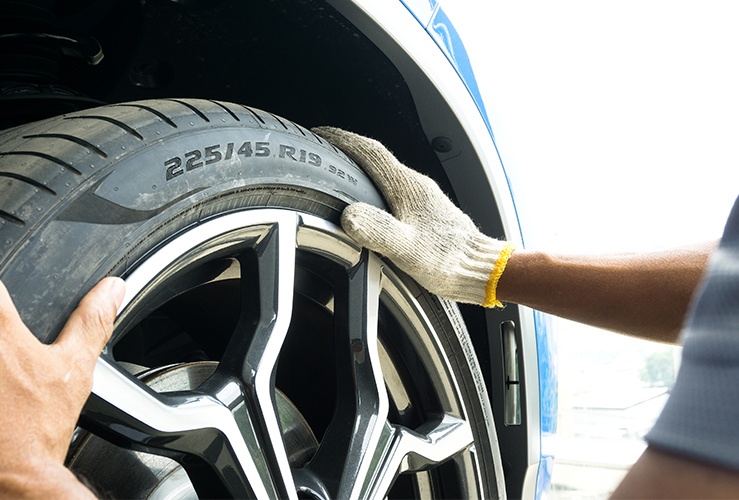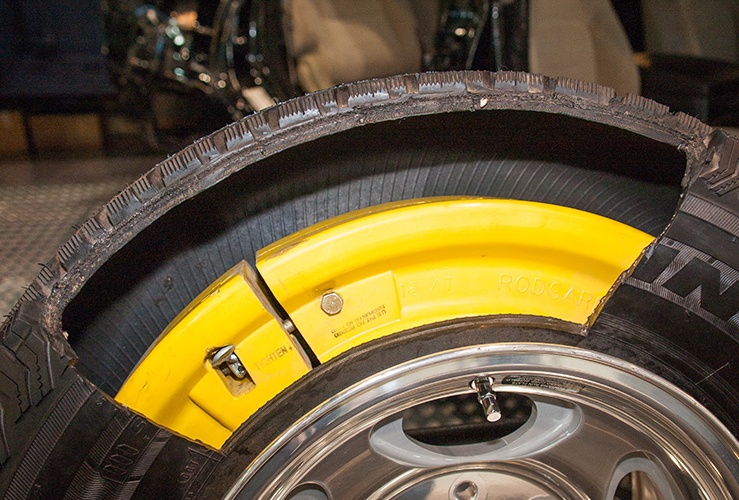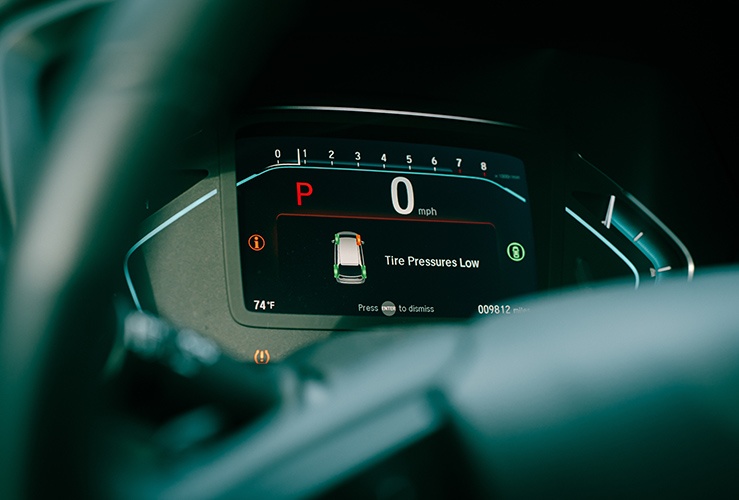How far can you drive on run-flat tyres? Are run-flat tyres any good? Whether you’re thinking about investing in run-flat tyres, or you recently bought a car with them factory-fitted and want to know how they work, read on for all you need to know.
As a motorist, few things can make you feel more deflated than a flat tyre.
And suffering ‘a flat’ can be even more stressful if it happens in a remote location or beside a busy motorway.
For most drivers, the solutions are going to be one of the following:
- Swap out the wheel for a spare (if there is one)
- Use a puncture repair kit (sealant and compressor)
- Call for roadside assistance
- Call mobile tyre fitter
But for a minority of motorists, there is another, much easier solution: just keep on driving. This option, however, is only possible if you have a set of run-flat tyres fitted to your vehicle.
What are run-flat tyres?
As the name suggests, these tyres let you ‘run’ even after a ‘flat’ tyre. They should give you enough time to reach somewhere safe where you can park and find a solution, or seek assistance. It is unlikely that they’ll be robust enough for you to reach home, unless it happens to be close by.
How far can you drive on a run-flat tyre?
However, how far you can run depends on the specific model of tyre. Generally speaking, vehicles can be driven on run-flats for 50 miles at speeds of up to 50 mph. That said, some premium tyres can be driven further - up to 100 miles at below 50 mph.
How do run-flat tyres work?
Run-flat tyres have reinforced sidewalls, meaning they can support the weight of the vehicle much longer than a traditional tyre, whose sidewall will collapse after a few hundred metres.
Some premium run-flat tyres have additional internal structures that mean they can be driven even further. For example, as well as having reinforced sidewalls, Rolls Royce cars’ run-flat tyres have wire rings which support the vehicle for up to 100 miles.
Why TPMS is crucial for run-flat tyres
A car with run-flats needs a fully functional TPMS (Tyre Pressure Monitoring System) because without it, a driver wouldn’t immediately know they had a puncture.
Unlike regular tyres, run-flat tyres are designed to maintain their shape and support the car's weight even with no air pressure. That means you might not notice you've had a puncture, because there is no wobble, no immediate pull, and no sudden sag (as you would get with normal tyres).
So without a TPMS warning, you could unknowingly drive too far or too fast on a flat run-flat tyre, risking tyre failure, wheel damage, or safety issues.
Of course, TPMS is important for vehicles with regular tyres, too, but if it wasn't functioning, you’d likely know you had a puncture due to sagging, extra road noise, pulling to one side etc.
How long should run-flat tyres last?
Run-flat tyres last about the same time as regular tyres - so between 25,000 and 50,000 miles.
Just as with a traditional tyre, a run-flat tyre’s lifespan can vary depending on factors like:
- Brand - some brands are simply more durable than others
- Driving style - harsh cornering and braking will wear them out quicker
- Wheel alignment and suspension condition - if these are poor then tyres will wear out faster
- Tyre rotation and maintenance
Problems specific to run-flat tyres
Due to their stiffer sidewall structure, run-flats can wear out unevenly if not rotated regularly. This obviously increases the amount of time and/or money motorists must spend to keep their tyres in good working order.
Run-flats can also be more susceptible to potholes and rough roads.
Additionally, due to the more rigid sidewalls, run-flats make for a rougher ride (although this, perhaps, does not apply to Rolls Royce run-flats!).
Some drivers report that, due to increased sidewall wear, run-flats may have a slightly shorter lifespan than regular tyres, too.
And finding the right replacement run-flat tyres for a vehicle might take a while. Stock are often limited, and ordering new tyres may take some time.
Last but certainly not least, run-flats cannot be driven on again. This means the tyre would have to be replaced - and run-flats are considerably more costly than regular tyres.
In contrast, regular tyres can often be repaired and used again - if the damage is limited, and it does not affect the overall structure.
A motorist may decide to swap out their run-flats for regular tyres, but of course, this would involve some considerable cost.
Are run-flat tyres any good? Run-flat vs regular tyres
This table gives you an at-a-glance impression of how run-flat tyres stack up against traditional tyres.
Feature | Run-Flat Tyres | Regular Tyres |
Driveable after puncture | ✅ Yes — up to ~50 miles at ≤50 mph | ❌ No — must stop immediately |
Spare wheel needed? | ❌ No | ✅ Yes (or a repair kit) |
Repairable after a puncture? | ❌ Rarely repairable | ✅ Often repairable (if puncture is minor) |
Comfort & ride quality | ❌ Firmer, harsher ride | ✅ Softer, more comfortable |
Cost | ❌ More expensive (typically 20–30% more) | ✅ Cheaper |
Availability | ❌ Limited sizes and stock | ✅ Widely available |
TPMS required? | ✅ Yes — alerts you to pressure loss | ❌ Not required, but recommended |
Longevity | ⚠️ Similar lifespan (25k–50k miles), but varies | ⚠️ Similar lifespan (30k–50k miles) |
Peace of mind | ✅ Can avoid roadside tyre changes | ❌ At risk of being stranded after a flat |
Are run-flat tyres popular or common?
While reliable figures are difficult to come by, it's fair to say a small minority of new vehicles are fitted with run-flat tyres; perhaps between 2% and 7% of new cars feature the technology.
Luxury brands like BMW, Mercedes and Rolls Royce feature run-flats in their higher-end models.
From the viewpoint of the manufacturer, run-flats offer the distinct advantage of being able to dispense with the spare wheel - meaning they can make the vehicle lighter (despite run-flats themselves being heavier than regular tyres). However, given the points already mentioned, some drivers might prefer to have a good old-fashioned spare onboard!
So, are run-flat tyres worth it?
In the event of a sudden puncture, run-flats should give you enough time to reach a safe location, where you can seek assistance. In essence, run-flats help ensure you’re not stranded in an undesirable location such as beside a busy motorway or a remote rural area.
However, the first issue you’ll run into is this: cars with run-flats do not generally have spare wheels.
Indeed, the run-flat was, in part, designed to dispense with the need for a spare, but this, ironically, could be seen as a big drawback - because once you’ve reached a garage, you may well find that they do not have your vehicle’s run-flat tyres in stock!
And don't forget - run-flats cannot typically be repaired.
Additionally, run-flats are expensive to replace, and give you a rougher ride than regular tyres.
So the bottom line is: run-flats help ensure you’re not immediately stranded by the roadside, and should give you enough time to reach somewhere safer. If this advantage is important to you, and is sufficient to overcome the various downsides, then you might answer ‘yes' to the question - are run-flat tyres worth it?







